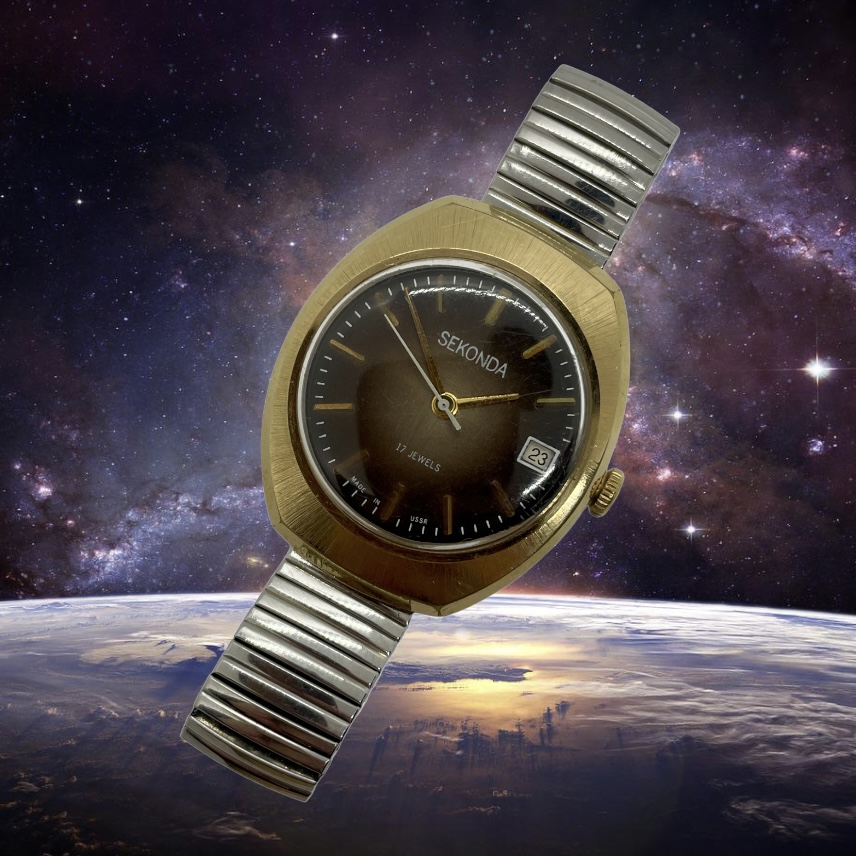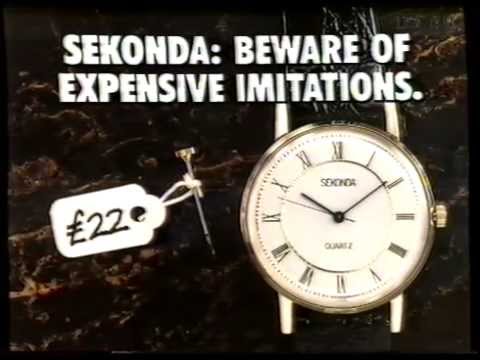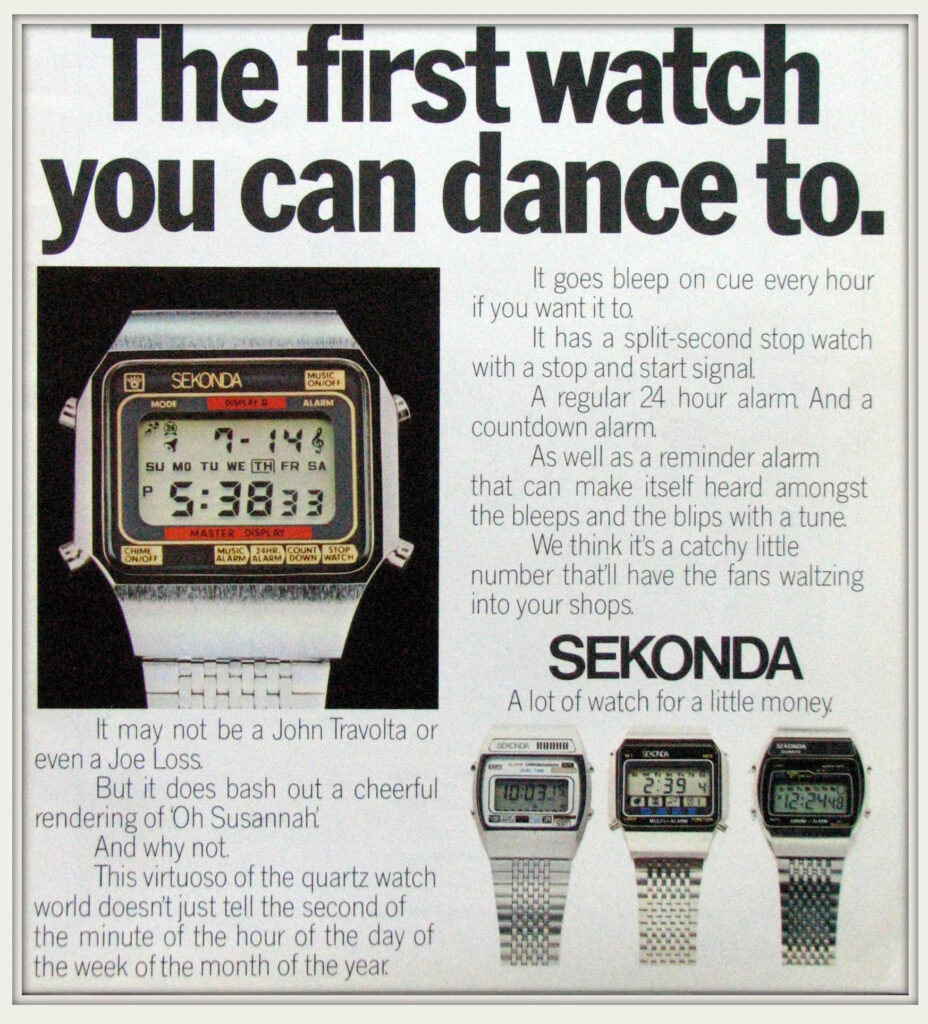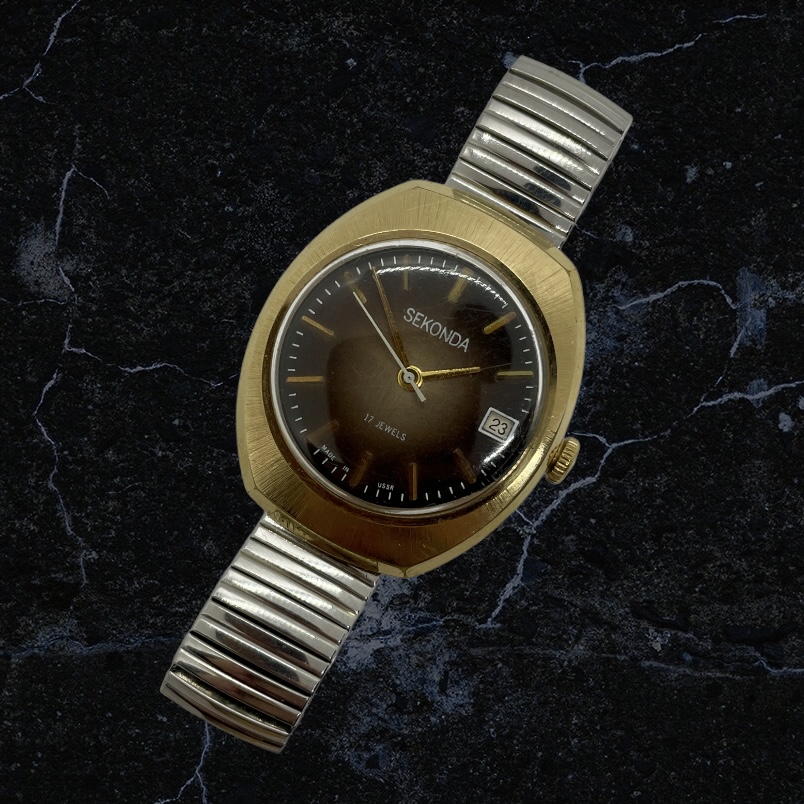Hang on a second-a… aren’t Sekonda watches made in Japan? Or at least in the Far East? Well, yes, but their origins actually lie elsewhere.

I came across this late 1960s or early 1970s Sekonda wristwatch (right) the other day – it was the styling that caught my eye. Huge egg-shaped ‘cushion’ cases were highly fashionable at the time, inspired by fashion which was inspired by the space race. And the bronze-brown dial just screams the period when combined with the gold-plated case. The fact that the dial shows ‘quarters’ in some lights is an added touch I like. And it’s a 17 jewel mechanical movement too, as the face indicates, so the movement isn’t dreadful quality or the ubiquitous quartz either. The face also indicates that it was ‘MADE IN USSR’. Gosh, more inspection was needed. Gently opening the case up for a surface clean revealed a trident symbol for Poljot watches, the wording ‘SEVENTEEN 17 JEWELS’ and the movement number ‘SU 2614.2H’. The back is stamped 853629a. Why the Soviet Union? There’s a story here!
In 1932, Polish emigré entrepreneur Alexander Margulies (1902-91) founded ELCO, importing and distributing Swiss watches. By 1939, ELCO had become the largest clock and watch distributor in the U.K. After World War II, Margulies added Soviet Russian mechanical watch factories to his suppliers. The Soviet Union had begun producing mass-producing watches in 1927, and production grew exponentially, with many models being both very affordable and very accurate, making the country an increasingly serious player in the mass-market industry. The Soviet watches Margulies added to his company included those by Poljot (1st Moscow Watch Factory, founded in 1930), Slava (2nd Moscow Watch Factory), Raketa (Petrodvorets Watch Factory, established in 1721), and others. Poljot (meaning ‘flight’) benefitted from its connections to the Space Race – Yuri Gagarin wore a Poljot as the first man in space in 1961.

Margulies’ highly successful company went public in 1962 and, in 1966, he and Soviet distributor ChasProm decided to create a new brand – SEKONDA (meaning ‘second’) to rebrand and market these Soviet mechanical watches in the UK. He also devised the now legendary tagline ‘Beware of Expensive Imitations’. They always were – and still are – highly affordable, durable, and reliable watches that largely could not be imitated more cheaply.
During the late 1970s & 80s, inexpensive, mass-produced quartz movements devastated the mechanical watch market. From the late 1970s onwards, Sekonda watches were made in China using high quality Japanese quartz movements. The company continued to grow and is still in fine form today, with many saying that Sekonda have been the leading and most successful British watch brand since 1988, with all watches having been designed and managed through their head office in Leicester since 1966.

During the 1980s, digital watches became a mainstay, following the release of the ‘Melody’ in 1979 which played a few bars of American favourite ‘Oh Susanna’. The ‘Melody’ was branded as ‘The first watch you can dance to’. I remember desperately wanting a Sekonda digital watch as a child! Now, along with Casio watches, they are all the rage with fashionable hipster kids!
The company has always had a beady eye fixed on the fast moving world of fashion, and many of their watches record the changing aspirational fashions of the day. From a collecting point of view, I think that’s appealing and significant in its own right.
After I put my new-to-me vintage Sekonda back together I gave it a gentle wind and, not only does it still work, but it also keeps perfect time! An hour spent with a toothbrush and a little disinfectant washing up liquid led to the case and the American Spiedel metal strap looking as good as new.


I know that this is no Breguet or Patek Philippe (or anything even approaching close!), but I love the style, it’s a mechanical watch that’s over half a century old, and it works perfectly. And I think it looks damned good on my wrist. For a price of £10, that can’t be bad, right?!
Looking online, I can see that many of its brothers and sisters are available for well under £50. And there appear to be thousands to choose from. Now I find myself repeating, “No, I do not need to start another collection…!” But I’m sure someone will, if they haven’t already.
Recycle and revive! Vintage value – antiques & vintage are green!
Found at the excellent Risby Barns, Suffolk.

